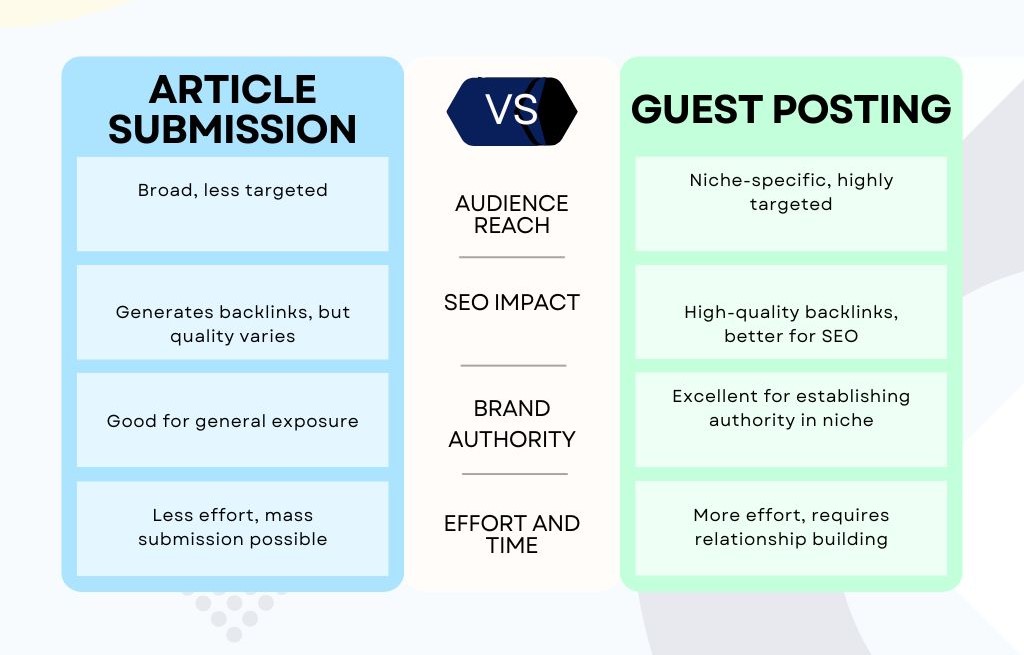Ever wondered what the difference between article submission and guest posting really is? You’re not alone—and if you’re chasing top rankings in Google, you must know the difference. Whether you’re a blogger, marketer, or business owner, this guide will help you make the smarter choice. So let’s dive right into it!
Whether you prefer guest posting or article directories, both are valid link building strategies that serve different purposes. Learn how to implement them effectively based on your SEO goals.
What is Article Submission?
Article submission involves publishing articles on platforms like EzineArticles or ArticleBase. These directories are designed to share content with a wide audience.
- Benefits: Easy to publish, can increase visibility.
- Drawbacks: Risk of low-quality backlinks, duplicate content issues.
Example: Use platforms like EzineArticles for publishing.
Pro Tip: Always ensure your articles are unique and relevant to avoid SEO penalties.
What is Guest Posting?
Guest posting means writing and publishing articles on someone else’s blog. It’s about sharing value with a new audience while building high-quality backlinks.
- Benefits: Builds authority, attracts niche traffic, earns strong backlinks.
- Drawbacks: Requires time and effort to craft personalized pitches and top-notch content.
Example: Collaborate with niche bloggers to reach your target audience.
Pro Tip: Focus on high-authority sites that align with your niche for maximum impact.
Article Submission vs Guest Posting: Comparison Table

Which Strategy Is Better in 2025?
Without a doubt, guest posting is the winner when it comes to SEO. Google’s algorithms are smarter than ever, favoring quality, relevance, and authority over sheer quantity.
That said, article submission still has a place—especially for brand awareness, fast indexing, and anchor diversification.
Best Practices for Each Strategy
For Article Submission
- Choose High-Authority Directories: Publish only on trusted platforms like EzineArticles.
- Write Unique Content: Avoid duplicate content to prevent SEO penalties.
- Add Keywords Naturally: Use relevant keywords without overstuffing.
- Include a Strong Call-to-Action (CTA): Guide readers to visit your website.
For Guest Posting
- Target Niche Blogs: Focus on blogs with high domain authority and relevant audiences.
- Craft Personalized Pitches: Approach blog owners with customized, value-driven proposals.
- Deliver High-Quality Content: Provide actionable, engaging, and well-researched articles.
- Optimize Author Bio: Use your bio to link back to your site and showcase expertise.
By following these best practices, you can maximize the effectiveness of both strategies!
Conclusion
Whether you choose article submission or guest posting, the goal is the same: share value and build credibility. Prioritize quality over quantity and align your strategy with your goals.
Ready to elevate your content marketing game? Start today!
Understanding how these submission types influence your site’s SEO starts with mastering the difference between internal and external links.

